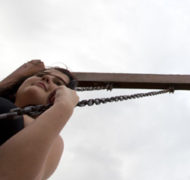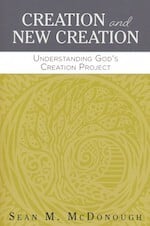When You Want to Belong
Blog / Produced by The High Calling
I had it all memorized—the way some people memorize favorite songs, Bible verses, or math facts.
That's how I had my town memorized—by heart. I knew which sidewalk bulges could derail a Schwinn bike. I knew shortcuts through alleyways; funny bluish hairdos of hunched old ladies at church; the smell of the Farmer’s Co-op break-room, which reeked of dust and cigarettes.
If I close my eyes, I can see it. Even more, I can feel it:
I’m five years old, pressing fingers into hot, bubbling road-tar in July. I’m eight, gripping the creaking, cool chains of swings at our town’s only playground. I’m twelve, diving deep into the depths of our town's inky pond, flutter-kicking all the way to the bottom to grab handfuls of cold mud.
When you live in one town—one house—for your entire growing-up life, you can’t help but memorize every last inch of a place. In a town like that, your own self is everywhere long after you leave—on every street corner, library table, and ballfield dugout.
I knew the place and the people, and they knew me. And that's how I knew I had a secure place in this world.
For most of my childhood life, one woman, Kathy, cut my hair. Another woman, Marge, delivered my café cheeseburgers. One suited man, Harry, stood at the doorway of the Sliefert Funeral Chapel in Marathon, Iowa. He greeted us with warm, soft pats on our backs, because he knew we were nervous about seeing another blue-haired church friend in a casket.
I knew where a lot of them would be buried years before they died. That’s because they had their gravestones set in place early—with blank spaces where a death date could be etched.
All that predictability might give some people a case of chronic itchy feet.
Me? I liked the stability. Sure, I had dreams of moving on. And I did move on. But no matter where I was, I wanted to live in a place where I knew I belonged and where I could count on the fact that some things stayed the same, when everything else in the world was changing.
I confess this: As a child, I naively thought that most people lived like me—in one house. Not true, at least not anymore. In 2010 alone, more than one in ten U.S. residents moved within the previous year, according to the U.S. census.
I figured that nomadic families would struggle to create stability. Also, not true. I asked my Facebook friends this question last week: “How did your family create stability and security in your life?” Turns out, many of them felt both, even on the move.
One woman moved ten times before she was ten years old. She wrote: “Stability came for me from two things. Dinner together every night (often by candlelight), and a father who always came home at the end of the day.”
Another wrote that she had “nothing at all” stable in her own home. She found stability at the dinner tables of friends' families.
A woman who lived in foster care recalled how she was allowed to tape photos of her loved ones across the bedroom walls. It made her feel at home.
All of that, I think, reveals how we mostly want to know we have a secure place in this world, even if the scenery changes. Even more, we want to know we have a forever place. We long for heaven. It's built into us, right into our hearts. In Ecclesiastes, Solomon says so: "He has planted eternity in the human heart."
Until we reach the other side of the eternity, we reach out to find some kind of stability right here, where we are. And if we have children, we want it for them.
Last year, I went back home to the memorized streets of my childhood. I walked along the bulging sidewalks. I visited the pond. I returned to the swings, hoping to fly once more, to feel that sensation of swinging higher still.
But when I turned the corner past the Kruse place, I saw it: my swings were gone. The whole swingset had been dismantled.
I was, to my own surprise, OK with that. I suppose it’s because I’d taken the best parts of those swings with me.
Standing on the street, I balled up my fists, not tightly, but gently. And right there, I could feel it: the cool chains of swings in my hands.
Image by Tim Miller. Used with permission. Sourced via Flickr. Post written by Jennifer Dukes Lee.





